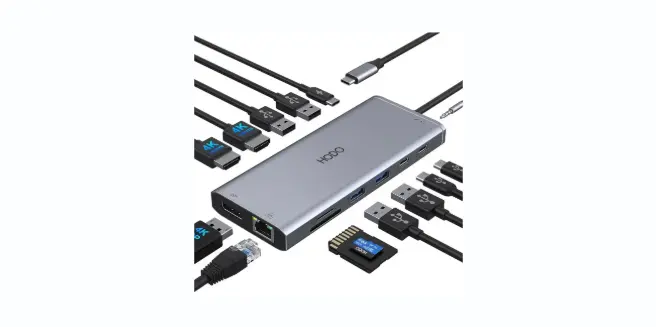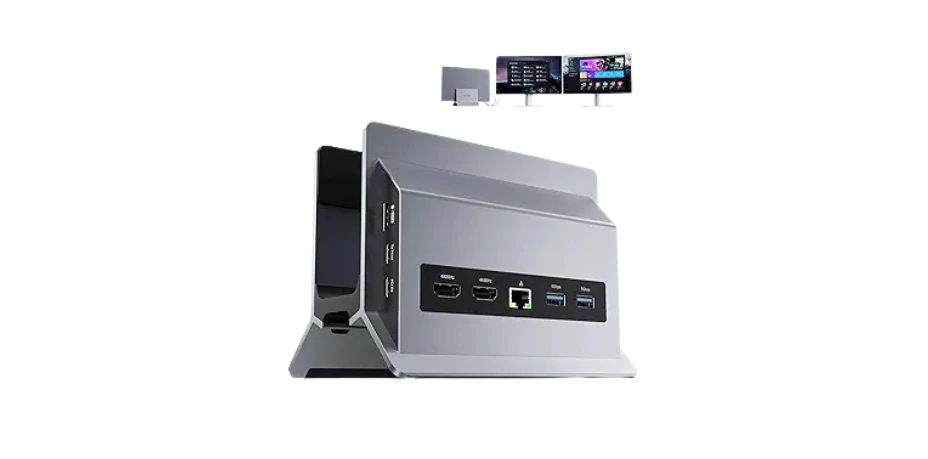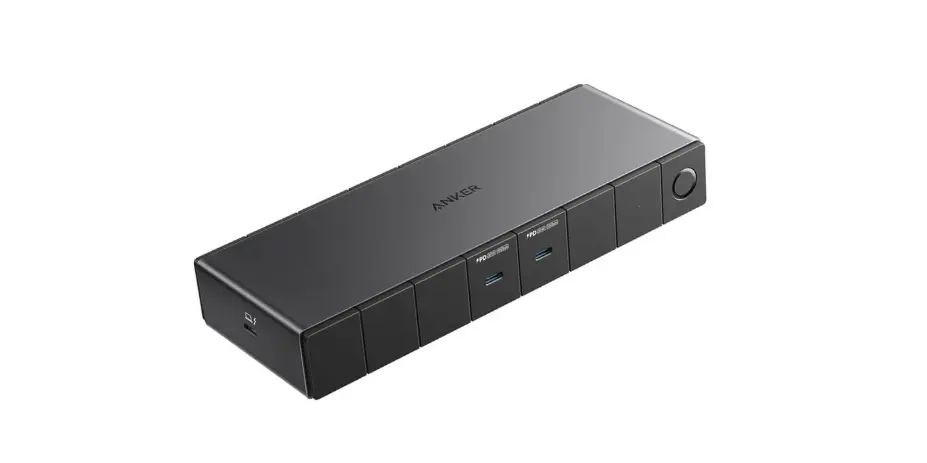Have you ever wondered how we can take our work-from-home setups to the next level by seamlessly transitioning from laptop to desktop with a touch of flair and efficiency? We might be all too familiar with the challenges of working on a single laptop screen—cramped space, cluttered desktops, and frequent alt-tabbing. What if there were a way to transform our workflow that not only enhances productivity but also brings comfort and style to our work environment?
The Power of Transformation
Let’s dive into the dynamic shift from a lone laptop to a full-fledged desktop experience. Imagine sitting down at a workstation that caters to our every need with room to spread out, organize, and focus. It’s an effortless transition when we utilize a docking station paired with extra screens, allowing for a customized workspace without losing the portability we love. Fancy the idea of bending your workspace to your will with a simple docking solution? Trust us, it’s a game-changer.
Why Make the Switch?
You’re probably thinking, why go through the trouble of changing our current setup? Well, the answer is quite simple: Efficiency. The time spent toggling between tabs, files, or applications could be better invested in the actual tasks at hand. Docking stations offer unparalleled connectivity, eliminating the need to constantly connect or disconnect peripherals such as keyboards, mice, and external drives. It centralizes everything, simplifying the chaos. This eradicates distraction and enhances multitasking abilities— picture more monitors, more space to breathe, and more paths to creativity.
Understanding the Docking Station
A docking station serves as the central hub that bridges the gap between mobility and a stationary workstation. By plugging in our laptops, we open up a world of possibilities. Let’s take a closer look at what this entails.
What is a Docking Station?
In essence, a docking station is a device that allows us to connect multiple peripherals to our laptop. It expands the laptop’s existing ports to facilitate connectivity with other devices like monitors, printers, scanners, and more. Think of it as the swiss army knife of connectivity.
Basic Features of Most Docking Stations:
| Feature | Description |
|---|---|
| USB Ports | Additional USB 2.0/3.0 ports for peripherals |
| HDMI/DisplayPort | Connects additional monitors |
| Ethernet Port | Wired network connection for stable internet |
| Audio Jacks | For microphones and speakers |
| Power Delivery | Charges the laptop while connected |
Setting Up
The transition process is as simple as connecting the docking station to our laptop and linking our desired peripherals. Once everything is connected, our laptop can instantly access and use multiple screens and devices without a fuss. This gives us flexibility and functionality beyond imagination.
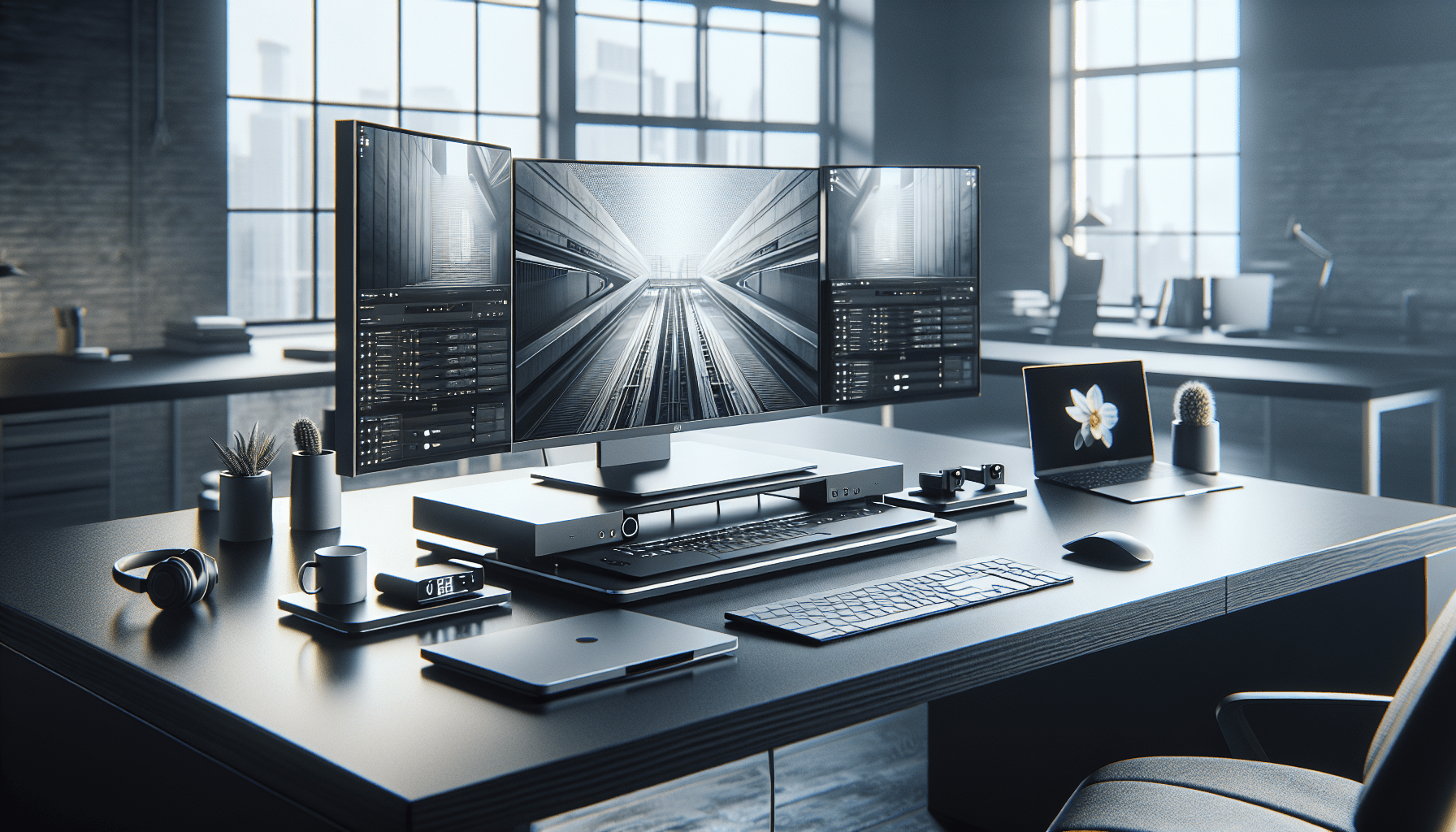
The Magic of Multiple Screens
It’s time we talk about what most excites us—adding extra screens. Why stick with one when we can have two or even three? The main allure here is increased screen real estate, and oh, how glorious it is.
The Benefits of Multiple Screens
-
Improved Productivity: With more screens, we can keep our email open on one screen, our main task on another, and perhaps some research material on a third. This setup drastically reduces the time we spend switching between windows.
-
Multitasking Made Easy: We can edit a document on one screen while participating in a video call on another. No more minimizing and maximizing!
-
Enhanced Focus and Organization: Dedicate specific screens for different functions. We could have a screen just for communication tools, one for browsing, and another for work applications.
-
Customizable Layouts: Many operating systems support settings that allow us to customize how our screens arrange virtually, pacing effortlessly into personal preference landscapes.
-
Reduced Eye Strain: Believe it or not, larger and multiple displays can help reduce eye strain by keeping everything at easy readability distances.
Setting Up Extra Screens
Whether we’ve just fetched new monitors or decided to utilize spare ones, setting them up is relatively straightforward:
-
Check Inputs/Outputs: Ensure compatibility between the docking station’s output options (HDMI, DisplayPort) and the monitors’ input.
-
Configure Display Settings: Once connected, dive into the display settings of our operating system. Arrange the monitors to mirror their physical layout, setting resolutions and orientations as preferred.
-
Fine-Tune Color and Brightness: Adjust settings such as color profile and brightness for comfort based on our workplace lighting setup.
Below is a simple checklist to guide our setup process:
| Step | Action |
|---|---|
| 1 | Connect the monitors to the docking station using HDMI or DisplayPort cables. |
| 2 | Power on the monitors and the laptop. |
| 3 | Access the display settings and arrange the monitors according to physical setup. |
| 4 | Adjust resolution settings to optimize clarity and sharpness. |
| 5 | Calibrate color and brightness for comfort and accuracy. |
Tailoring the Workspace
With our technology in place, it’s time for a personal touch. We believe our work environment should reflect who we are and foster an inviting setting. Let’s explore how to customize it further.
Ergonomics Matter
Our health and comfort are crucial. A proper ergonomic setup can prevent strain injuries and promote better productivity. When arranging desks, chairs, and monitors, let’s keep ergonomics as a focal point.
-
Desk and Monitor Heights: Ensure the tops of our monitors are at or just below eye level. This minimizes neck strain. The chair should allow our feet to rest flat, with thighs parallel to the floor.
-
Keyboard and Mouse Placement: Our wrists should rest comfortably with a slight elevation when working. Consider ergonomic keyboards and mice to add to comfort.
Lighting and Decor
Proper lighting reduces eye fatigue and lifts our spirits. A combination of natural light with supplemental LED lamps is ideal. Additionally, adding personal touches like photos, art, or plants can positively impact mood and stress levels.
Cable Management and Organization
The more devices we add, the more cables we grapple with. Hidden cables give a clean and uncluttered look.
-
Cable Ties and Clips: Secure cables at the back of desks or along table legs using ties or clips.
-
Docking Station Proximity: Keep the dock close to the laptop to limit visible cabling distance.
-
Desk Organizers: Utilize drawers, stands, or panels to neatly organize stationery and tech peripherals.
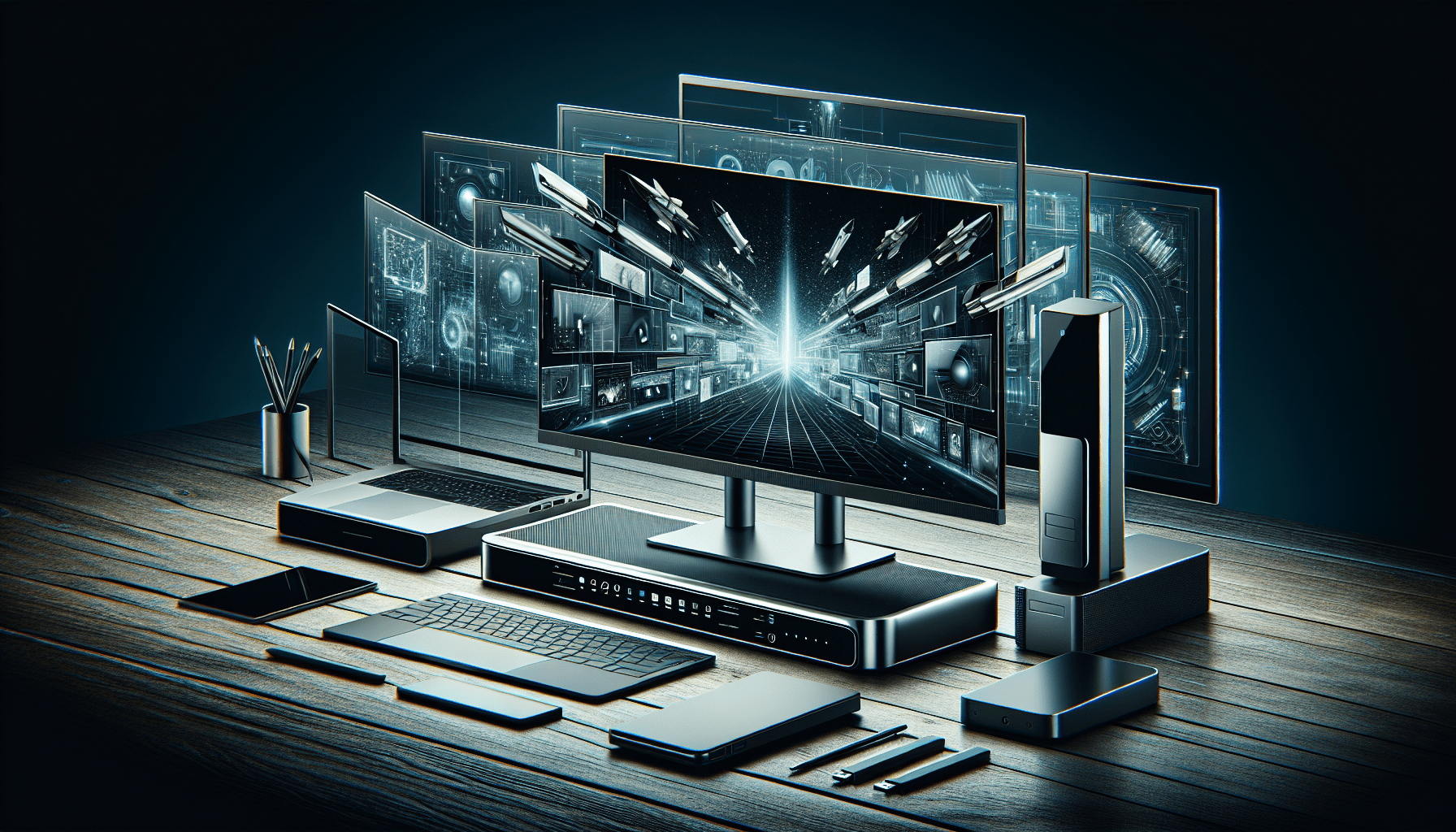
Exploring Software Options
Harnessing the power of software tools can further complement our setup. Let’s look at options that could streamline and enhance our computing experience.
Software for Enhanced Workflow
Here’s a list of helpful software ideas:
-
Display Management Software: Tools like DisplayFusion help manage multiple screen layouts more effectively, allowing for quick functional switching and automation.
-
Task Managers and Planners: Software like Trello or Asana can keep our tasks organized across multiple screens.
-
Communication Tools: Apps such as Slack or Microsoft Teams keep interactions efficient and within reach.
-
File Sharing and Storage: Utilizing services like Dropbox or Google Drive can ensure quick access across devices.
Learning and Adaptation
While the setup is a dream for many, it’s essential to learn the equipment’s ins and outs. Familiarizing ourselves with the software and settings can unlock full potential and comfort within our workflow.
Final Thoughts
It’s incredible how a simple docking solution and additional screens can delightfully revolutionize our workspace. We are embracing a setup that promises heightened productivity and the luxury of space to think and create. Shifting to this dynamic arrangement doesn’t just encourage efficiency, it inspires, offering a harmonious balance between function and elegance. As we adjust to these new settings, let’s continue to refine and enjoy a personalized, comfortable, and productive way of working. The future of our workflow is limitless—much like the creativity born from it.
